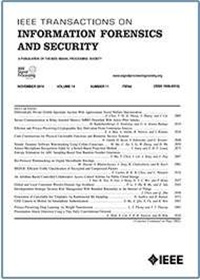MOJO: MOtion Pattern Learning and JOint-Based Fine-Grained Mining for Person Re-Identification Based on 4D LiDAR Point Clouds
IF 8
1区 计算机科学
Q1 COMPUTER SCIENCE, THEORY & METHODS
IEEE Transactions on Information Forensics and Security
Pub Date : 2025-09-25
DOI:10.1109/TIFS.2025.3614500
引用次数: 0
Abstract
Person Re-identification (ReID) primarily involves the extraction of discriminative representations derived from morphological characteristics, gait patterns, and related attributes. While camera-based Person ReID methods yield notable results, their reliability diminishes in scenarios involving long distances and limited illumination. LiDAR enables the precise acquisition of human point cloud sequences across extended distances, unaffected by variations in lighting or similar factors. Nevertheless, current LiDAR-based Person ReID techniques are limited to static measurements, rendering them susceptible to perturbations from attire variations, occlusions, and similar confounding factors. To address these issues, this manuscript introduces MOJO, which is applied to 4D LiDAR point clouds to extract unique motion patterns specific to individuals. To characterize the motion patterns across two consecutive point cloud frames, MOJO employs optimal transport to compute point-wise motion vectors, thereby enabling the identification of discriminative implicit motion information. To mitigate the attenuation of point cloud density induced by self-occlusion during dynamic motion, MOJO leverages inverse point-wise flow information to integrate forward frames, thereby yielding a comprehensive representation, whilst concurrently ameliorating the effects of heterogeneous density distribution within localized regions of the 4D point cloud data. Additionally, the inherent unordered nature and sparsity of 4D point clouds present significant obstacles to capturing discriminative features. We develop the 3D joint graph to extract scalable fine-grained traits and employ the joint pyramid pooling module to conduct hierarchical spatiotemporal aggregation across the 4D point clouds. Extensive experimental evaluations demonstrate that MOJO achieves state-of-the-art (SOTA) accuracy on the LReID dataset (for LiDAR-based Person Re-identification) and SUSTech1k dataset (for LiDAR-based Gait Recognition) without any pre-training while exhibiting robust performance across various point cloud densities. Our code will be available atMOJO:运动模式学习和基于关节的细粒度挖掘,基于4D激光雷达点云的人再识别
人的再识别(ReID)主要涉及从形态学特征、步态模式和相关属性中提取判别表征。虽然基于摄像头的Person ReID方法产生了显著的结果,但在涉及长距离和有限照明的情况下,它们的可靠性会降低。激光雷达能够在不受光照变化或类似因素影响的情况下,精确地获取长距离的人类点云序列。然而,目前基于lidar的Person ReID技术仅限于静态测量,使其容易受到服装变化、遮挡和类似混杂因素的干扰。为了解决这些问题,本文介绍了MOJO,它应用于4D激光雷达点云,以提取特定于个人的独特运动模式。为了描述跨越两个连续点云帧的运动模式,MOJO采用最优传输来计算逐点运动向量,从而能够识别判别隐式运动信息。为了减轻动态运动过程中自遮挡引起的点云密度衰减,MOJO利用逆点方向流动信息整合前向帧,从而得到一个全面的表示,同时改善了四维点云数据局部区域内密度分布不均的影响。此外,四维点云固有的无序性和稀疏性对识别特征的捕获构成了重大障碍。我们开发了三维联合图来提取可扩展的细粒度特征,并利用联合金字塔池模块对四维点云进行分层时空聚合。广泛的实验评估表明,MOJO在没有任何预训练的情况下,在LReID数据集(用于基于激光雷达的人员再识别)和SUSTech1k数据集(用于基于激光雷达的步态识别)上实现了最先进的(SOTA)精度,同时在各种点云密度上表现出稳健的性能。我们的代码可以在https://github.com/O-VIGIA/MOJO上找到
本文章由计算机程序翻译,如有差异,请以英文原文为准。
求助全文
约1分钟内获得全文
求助全文
来源期刊

IEEE Transactions on Information Forensics and Security
工程技术-工程:电子与电气
CiteScore
14.40
自引率
7.40%
发文量
234
审稿时长
6.5 months
期刊介绍:
The IEEE Transactions on Information Forensics and Security covers the sciences, technologies, and applications relating to information forensics, information security, biometrics, surveillance and systems applications that incorporate these features
 求助内容:
求助内容: 应助结果提醒方式:
应助结果提醒方式:


